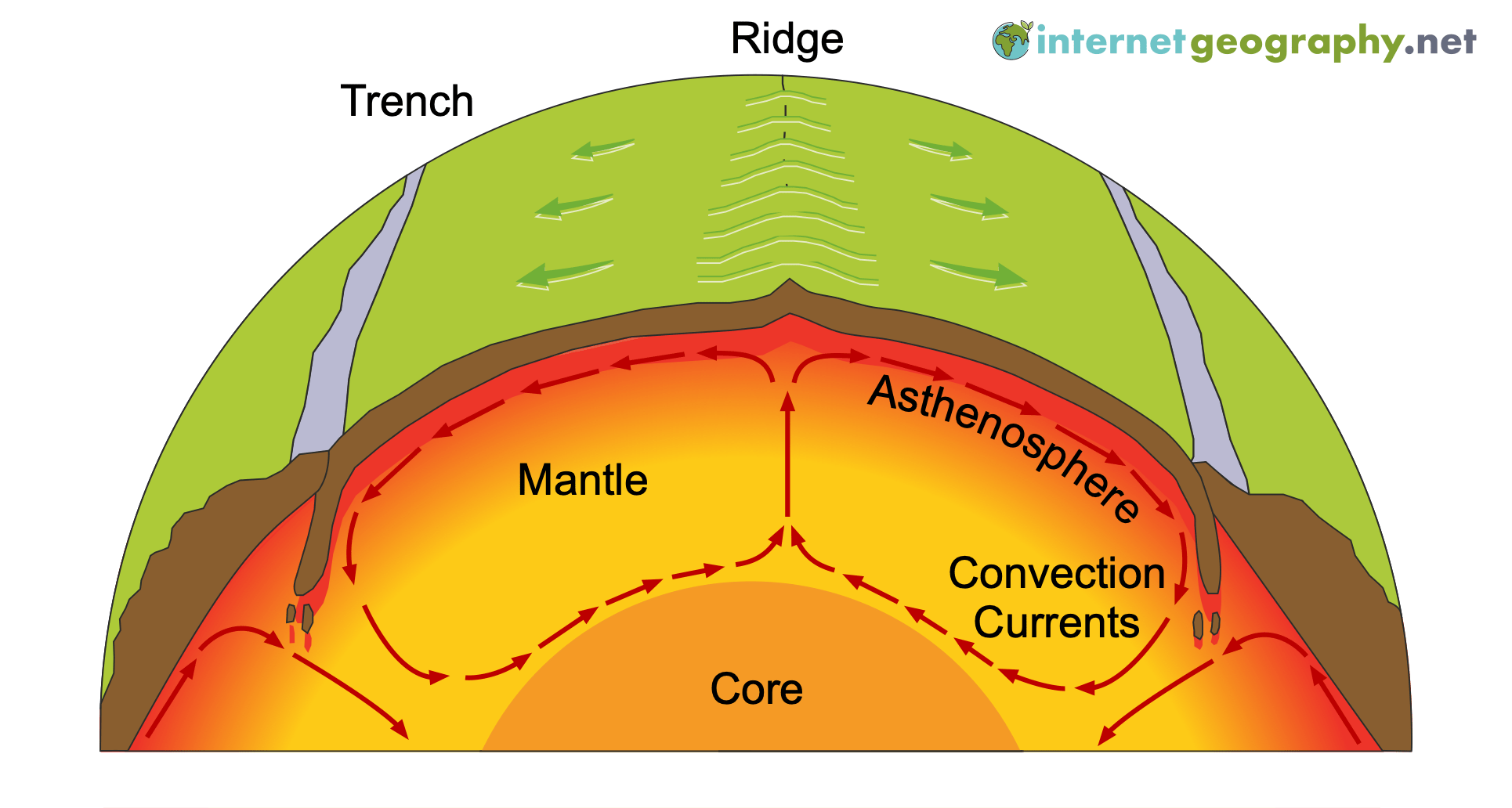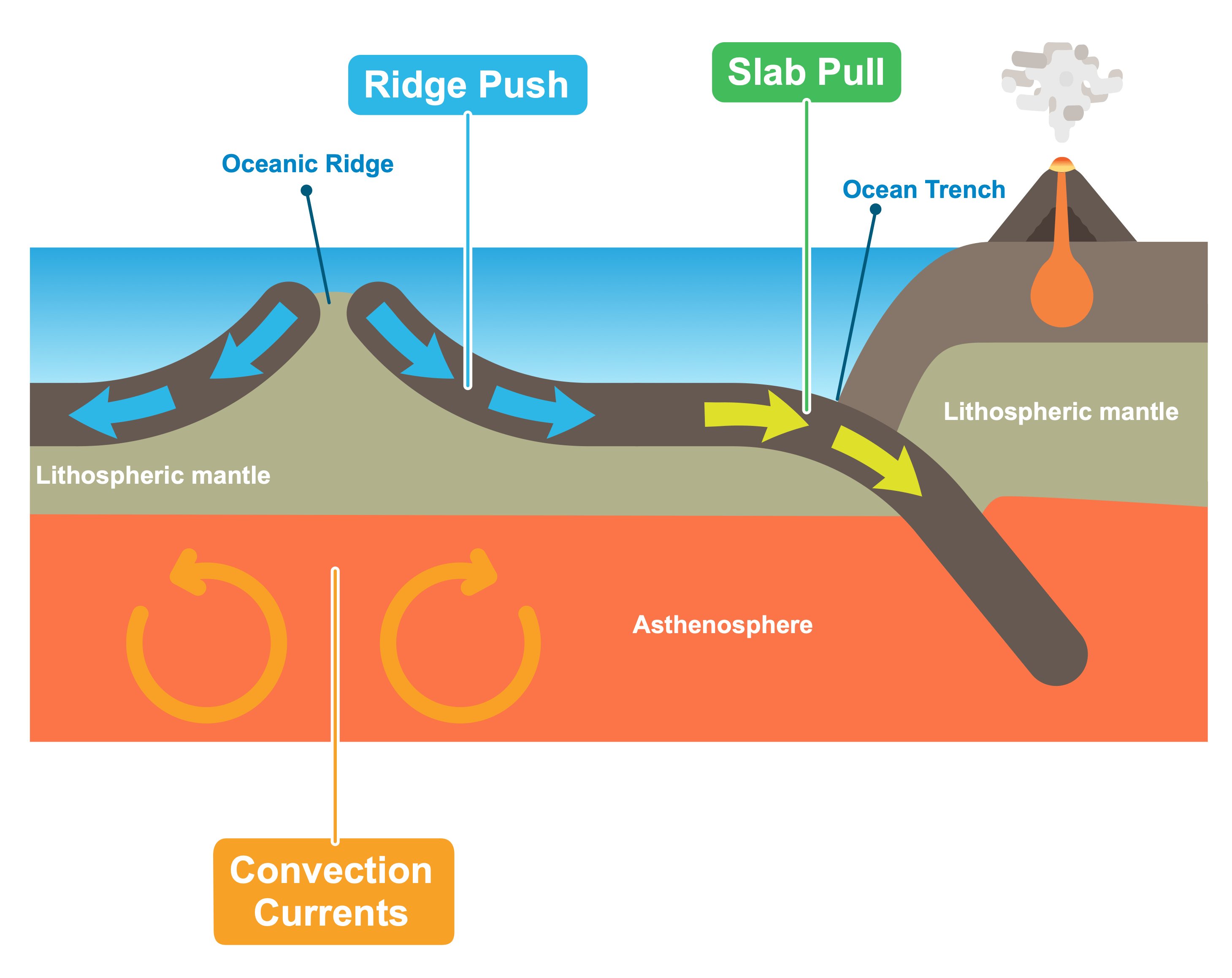Why do tectonic plates move?
The Earth’s tectonic plates are in constant motion. However, this movement is slow, and rates vary from less than 2.5 cm/yr to over 15 cm/yr. Tectonic plates move as the asthenosphere, which is ductile, is weak enough to accommodate the movement of the solid and brittle plates above it.
Three theories have been proposed for the movement of tectonic plates over the asthenosphere. None have been thoroughly proven. The theories are:
- convection currents
- ridge push
- slab pull
Convection currents and plate movement
The initial explanation for the movement of tectonic plates was convection currents in the mantle. The theory suggests these convection currents are created by heat from within the Earth, much of which is generated by radioactive decay in the core.
The idea is that the outer core, which is hotter than the mantle, drives convection currents within the mantle. The mantle is solid. However, the asthenosphere can move (very slowly). The idea is that convection currents reach the asthenosphere and drive the movement of the rigid lithosphere above. The theory proposed that as the semi-molten rock in the mantle is heated, it becomes less dense than its surroundings and rises. As it reaches the crust above, it spreads out, carrying the plates above.
This theory gained widespread acceptance for a considerable period despite scant evidence of significant convection currents detected using modern imaging techniques capable of identifying movements sufficient to shift tectonic plates. Consequently, this theory is now largely dismissed.
Ridge push and slab pull
The ridge push and slab pull theory is now the more widely accepted explanation for the movement of tectonic plates.
Ridge push and plate movement
Newly-formed plates at oceanic ridges (constructive plate margins) are warm and so have a higher elevation at the oceanic ridge than the colder, more dense plate material further away; gravity causes the higher plate at the ridge to push away, causing the plates to move away from each other.
Slab pull and plate movement
The most recently proposed and most likely explanation for tectonic movements is slab pull. At destructive plate margins, the denser oceanic plate sinks into the mantle under the influence of gravity, pulling the rest of the plate along with it.
Recent research has shown that slab pull is the primary driving force for most plate movement, as plates with more of their edges being subducted tend to be the faster-moving ones. However, ridge push has also been presented in recent research as a force that drives plate movement.



